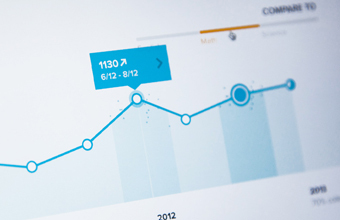


13-01-2015

We're a week into the new year, the #newyearnewme hash tag is finally beginning to leave our news feeds, and people are realising their hopeless alcoholism upon attempting dry January. But what's to come on the web in the coming year?
1. Big focus on video and imagery
A picture speaks a thousand words, and users often prefer to look or watch rather than read. Images and video have a way of immediately drawing the user in, so there is an increasing need for high quality custom photography and video on websites.
Photography / large full-screen imagery
These days it is easy to tell when a company has used stock photography, and it can compromise the integrity of the business. More companies are investing in professional high quality photography, and large full-screen imagery with minimal text is becoming much more dominant on the web.
Motion graphics / animations
With the rise of HTML5, it's becoming easier to create an animated experience for the user. We are seeing websites that are taking advantage of this with striking motion graphics and moving imagery. Sometimes this can be subtle but adds a dynamic element to a website.
Background and full-screen videos
Websites don't need to be static. Building on the animated nature of motion graphics, more companies are beginning to implement video into their websites. But not video as a square somewhere on the page, large full-screen videos often accompanied by a small amount of text.
Typeform include a video of a playful dog licking the screen on their website, and on pressing play you can see how the company works and what they do in a short informative video.
These videos can often tell a story and interact with the user. However, although the benefits for larger screened devices is clear, it may prove to be a slightly limiting tactic for mobile users.
2. Storytelling
Stories can be a very powerful medium for communicating a message. They can be incorporated in any of the ways featured above, and can be a great way to quickly convey a company's message and what they do. Design and illustration studio These are Things tell a story in their website through the use of full-screen images, illustrations, and parallax scrolling.
3. Goodbye IE8, hello Spartan
In 2014 many developers (including us) said a fond farewell (or good riddance) to supporting IE8. The reason for this is mainly that it is an outdated browser that doesn't support most modern techniques. Although there have been improved versions of IE since, the general backing for the browser is dwindling.
Microsoft have been working on a new browser for Windows 10 going by the code name of Spartan. And it's about time too. They are claiming to include features that none of the rival browsers have, and it is said to have a simplistic feel similar to that of Chrome.
4. Responsive design continues to be important
If you're not designing responsively by now, you must have been in a coma or living under a rock for the last year. Responsive design has developed throughout 2014 and continues to do so.
The domination of mobile devices has led to a subsequent mass of responsive design, and as new technologies emerge, there are more and more devices to consider when designing a website. This brings an emerging focus on not just making it work on mobile, but ensuring the quality and performance is as high as possible.
5. Typography
Cohesive, eye-catching typography is an essential aspect of creating and defining a brand over all platforms and mediums. As web fonts become more frequently used, the quality and variation shows a vast improvement. Designers are faced with more choice and flexibility when it comes to fonts, with Google and fonts.com offering free tools and a wide range of affordable services from Sketch and Affinity Designer.
Typography plays a major part in the design of a website, and large text is taking centre stage. It has the power to drive the feel of a website, and seems to be going in a minimalistic and expressive direction in 2015.
To sum up
This is just a prediction of what may come, what really dominates and succeeds on the web this year will become clearer with time. The limitations for mobile devices may prove to be an issue with a lot of these trends, so it is a question of whether they will adapt and work on mobile, or slowly die out.
From what we can tell, 2015 will bring bigger, more vibrant, and ultimately more eye-catching and interactive websites.
There will be fresh, user-friendly online experiences that engage through the implementation of combined text, images, video, interactive functionality, and a fair amount of scrolling.
Now reject that invitation to the pub and make use of that gym membership, you can't give up on new year's resolutions until at least February. It's the rules.





